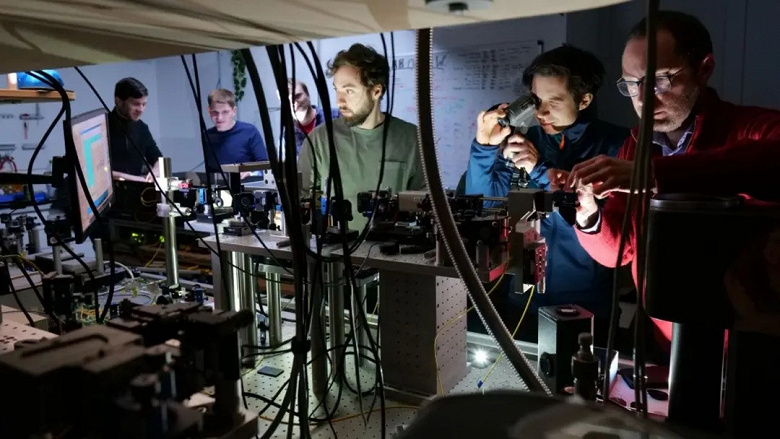A team of researchers from the University of Stuttgart in Germany has made a breakthrough towards creating a practical quantum internet. They have successfully demonstrated for the first time the transfer of quantum information between photons emitted by two different quantum dots, solving one of the most challenging tasks in creating quantum relays necessary for extending quantum communication over long distances via fiber-optic networks. Quantum communication uses individual photons, whose polarization encodes information as zeros and ones. Any attempt to read or intercept this state leaves “traces,” making the system fundamentally secure. However, photons weaken when traveling through fiber-optic cables, and quantum information cannot be copied or amplified. Quantum relays are designed to restore this information through teleportation, but this process requires nearly identical photons from different sources. The Stuttgart team solved this problem using nanometer-sized semiconductor “islands” known as quantum dots. These quantum dots generate individual photons with specific characteristics. Scientists managed to transfer quantum information between photons originating from two different quantum dots. The project involved collaboration with the Leibniz Institute for Solid State and Materials Research in Dresden, where nearly identical quantum dots were created. As Tim Strobel, the lead author of the study, notes: “Quantum light from different quantum dots was never teleported before because it is a very complex task.” He adds that fixed energy levels within quantum dots allow for the generation of well-defined photons on demand.

To demonstrate the teleportation, one quantum dot produced a single photon, and the other generated a pair of entangled photons. One photon from the pair traveled through a 10-meter fiber-optic cable and interacted with the single photon. This interaction transferred the polarization state to the remote photon partner. Quantum frequency converters corrected the remaining frequency differences to keep the photons indistinguishable. “The transfer of quantum information between photons from different quantum dots is an important step towards overcoming long distances,” notes Professor Peter Michler. Previous experiments by the same group maintained quantum entanglement over a 36-kilometer fiber-optic cable in Stuttgart, proving the system’s potential for large-scale deployment. The current setup teleports information with a success probability of just over 70%. The team aims to improve this figure by stabilizing the quantum dots and refining semiconductor manufacturing techniques.
In recent advancements, the global push towards quantum communication has seen substantial investment and interest from governments and private sectors alike, recognizing the quantum internet’s potential to revolutionize information security and processing. Researchers are also exploring integrating quantum dot technology into existing telecom infrastructures for more secure and efficient communication channels. This move aligns with increasing global demands for fortified cybersecurity measures, urging further innovation in quantum technologies.









